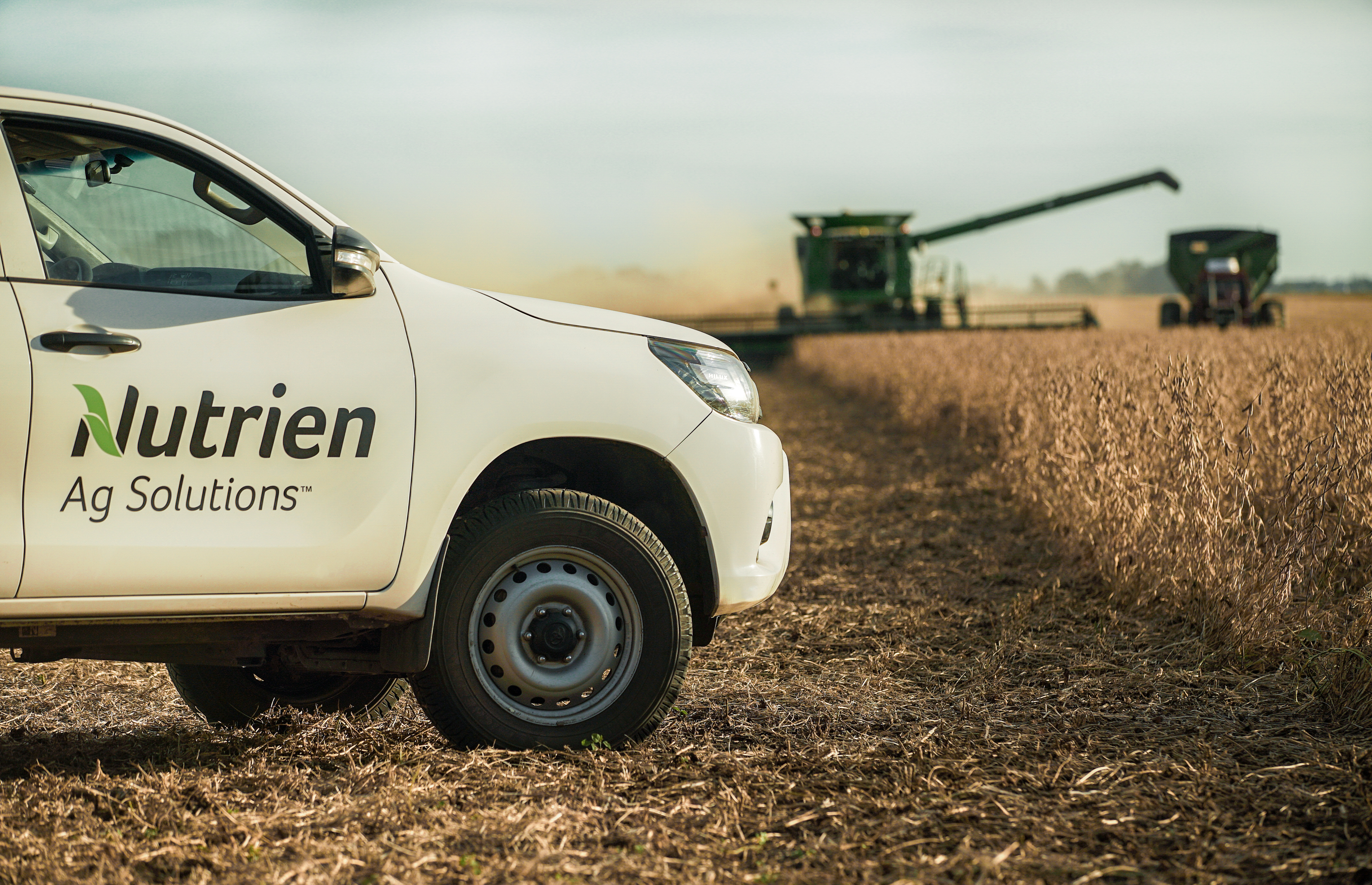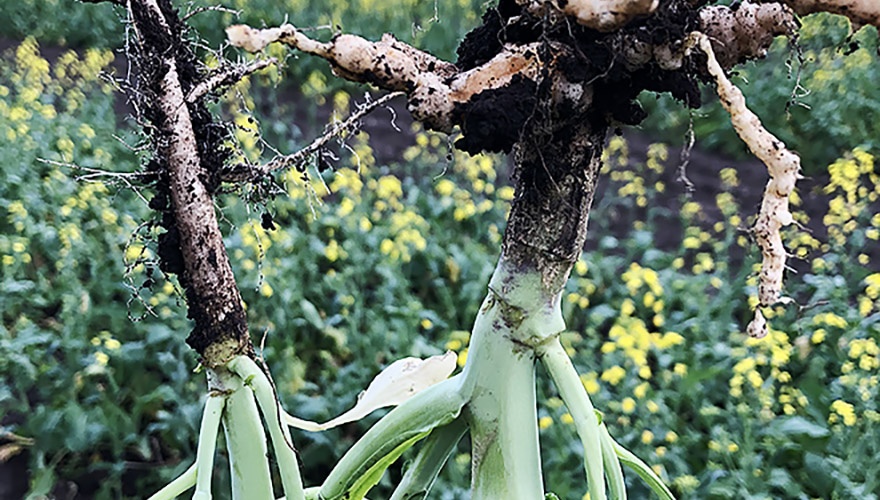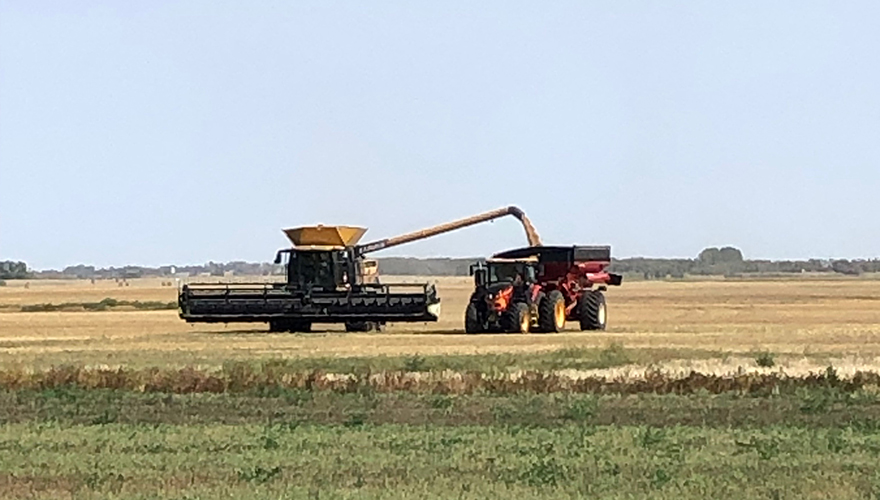Posted September 11, 2019
Managing After A Fall Frost On Canola
Scraping the truck’s windshield to go scouting your canola crop after a frost isn’t a pleasant task. Deciding what to do to salvage the best quality and yield isn’t easy either.
“There isn’t one easy answer because there are so many variables – how hard the frost was, the stage of the crop, the ability to swath if necessary – every farm may have a different approach after a frost,” says Lyle Cowell, manager of agronomic services for Nutrien Ag Solutions in northeast Saskatchewan.
After a heavy frost lower than -2°C, immature seeds with a moisture content of more than 20 per cent may lock in green chlorophyll because the enzymes that clear chlorophyll are damaged. As a result, no more clearing can occur, no matter how long you wait and what the weather is. The other major concern after a heavy frost is pod desiccation, shattering and pod drop. This may happen rapidly, within a day, if weather turns warm and sunny.
Cowell says the most important decision is to wait and see how the canola was affected. If the canola crop was at a seed moisture level of less than 20 per cent, the seed will normally avoid locking in green. Pod desiccation and shattering may still be a concern.
“Assess the damage in the early afternoon after a frost. This is when damage such as wilting of leaves, desiccation and shattering may start to show up,” says Cowell.
To swath or not to swath
If the canola crop was ready to swath – at least 60 per cent of the seeds on the main stem are showing colour change – there is no reason to hold off swathing after a light or heavy frost, or even wait for a few hours to assess the damage. Swath as soon as possible to help get ahead of any potential pod shattering or pod drop.
If the crop was immature when a lighter frost above -2°C hit, pod desiccation may not occur. In this is the case, Cowell advises to hold off swathing until the optimal swath timing, but to scout every few days to reassess the damage. Whether green is locked into the seed is out of a farmer’s control, so the swathing decision should be based on whether pod shatter and pod drop is a risk.
With heavier frosts, daily assessments will help guide the swathing decision. If pod shatter and drop are not occurring, swathing can be delayed to the optimum timing, and could help clear out green seed if the enzymes were not damaged.
If the plan was to straight cut the crop, a similar decision will need to be made, based on the maturity of the crop and pod desiccation. If seed moisture was tough or damp, and pod desiccation was increasing the risk of shattering losses, the decision could be made to straight cut and artificially dry the crop. With a more immature crop, swathing may be the only option if shattering becomes a concern.
If the crop was already swathed when a frost occurred, high green seed may still be locked in if the seed moisture content was above 20 per cent.
Cowell also says farmers sometimes wonder if they should swath ahead of a forecasted frost even if crop maturity isn’t at the optimal swathing stage. “I think a better strategy is to wait and see if it freezes, and then make your swathing decisions. If you go ahead and swath, and it doesn’t freeze, all you’ve done is cut prematurely, which can affect quality or yield.”
Re-assessing variety selection
In the push for high-yielding canola hybrids, maturity is usually a trade-off with yield. Cowell says variety selection should look past yield, and also consider other traits such as early maturity and pod strength, which can be advantageous in avoiding the effects of frost.
“This time of year, while you’re waiting for harvest, it’s easier to think about what traits are most important. If you find that frost is becoming more of a concern, at least consider planting several hybrids with a range of maturities to help manage the frost risk,” says Cowell.
FEATURED LINKS
NEWSLETTER
Want to stay caught up in all things agriculture? Sign up for the newsletter and get all the latest news straight to your inbox.
Getting It Bin Just Beginning
Posted September 24, 2019





